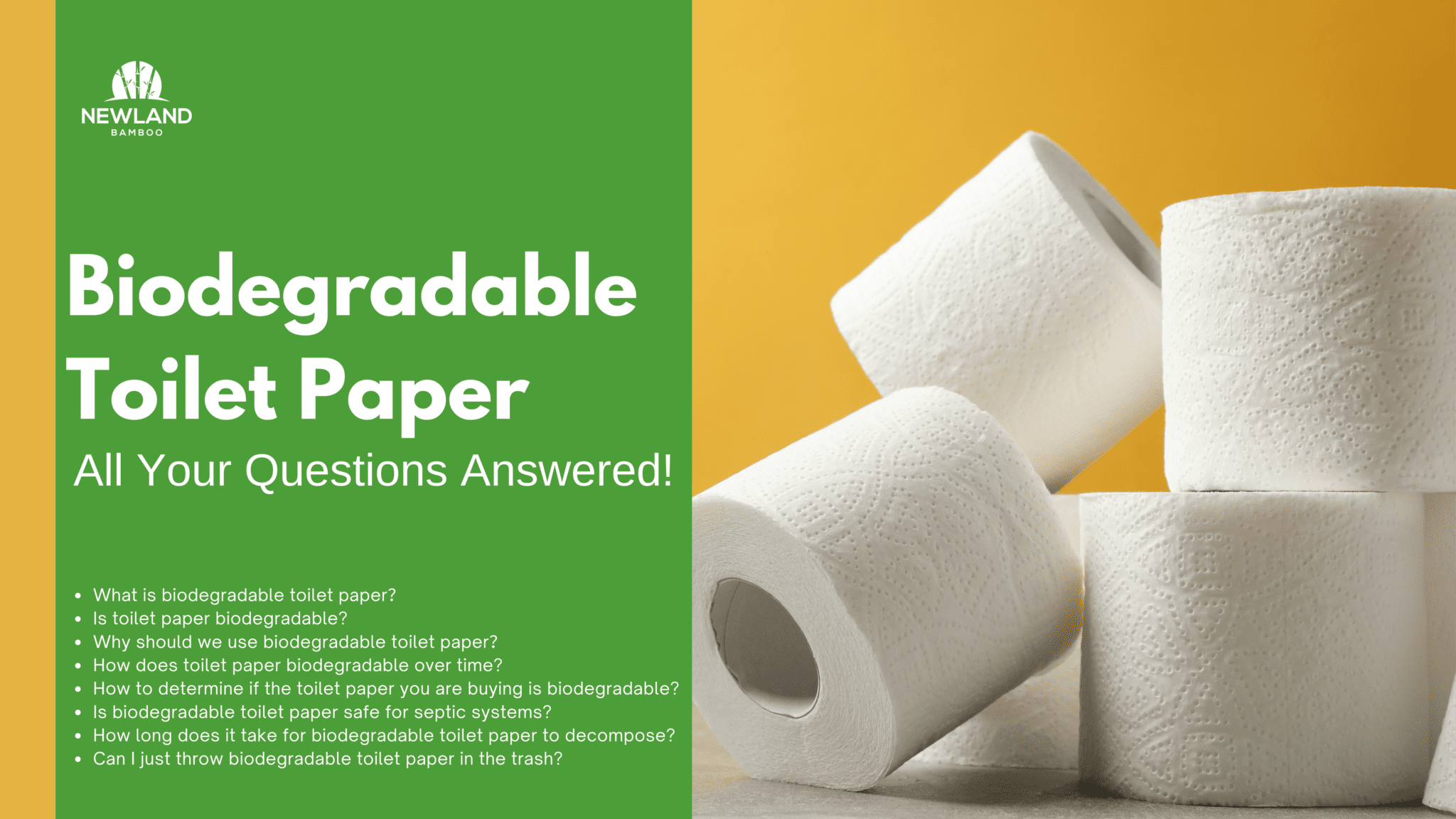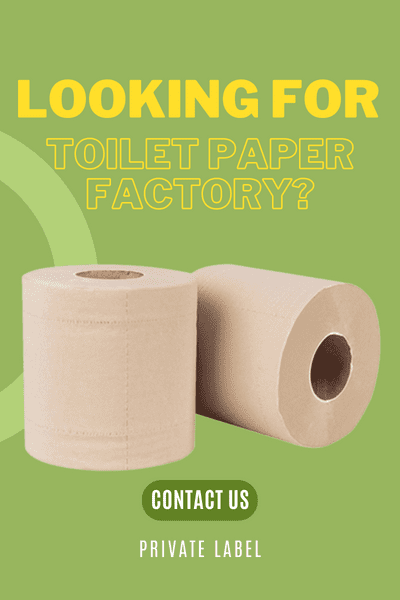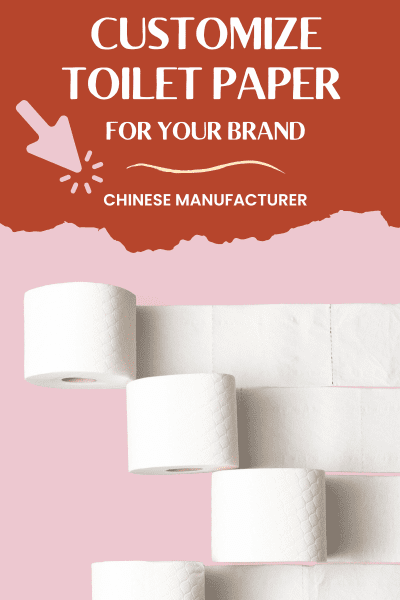What is biodegradable toilet paper, and why should you use it?
Biodegradable toilet paper is designed to break down naturally, causing minimal environmental impact. It is made from sustainable materials like bamboo, sugarcane, and recycled fibers, which decompose much faster than traditional toilet paper. This type of toilet paper is eco-friendly, septic safe, and gentle on the skin, making it an ideal choice for environmentally-conscious individuals.
What is biodegradable toilet paper?
It is essential to understand what biodegradability means. Biodegradability refers to the ability of a material to decompose naturally, with the help of microorganisms, into basic elements that are safely absorbed by the environment. Biodegradable toilet paper is made from materials that break down quickly and easily in natural environments, such as forests, oceans, and landfills. This means that biodegradable toilet paper does not contain synthetic materials or chemicals that can cause harm to the ecosystem.
Is toilet paper biodegradable?
Toilet paper is an essential commodity that is found in every household. It is used for personal hygiene and is an indispensable item in our daily lives. Many people question whether toilet paper is biodegradable or not. In fact, toilet paper is indeed biodegradable, but not all type of toilet paper is completely biodegradable.
The question of whether toilet paper is biodegradable is complex and depends on various factors such as the type and quality of paper, the conditions of the environment, and the time it takes for the paper to decompose.
In general, wood pulp toilet paper is considered biodegradable as it is made from natural fibers that can break down over time, but the rate and degree of decomposition can vary. Studies have found that wood pulp toilet paper can take several months to a few years to decompose in landfills under optimal conditions, such as exposure to oxygen, moisture, and microbes. However, in waterways or septic tanks, where the conditions are less favorable, toilet paper may take longer to break down or even cause blockages and pollution. Moreover, the chemicals used in the production of wood pulp toilet paper may be hardly biodegradable, such as polyester and adhesives that may not be natural. So we say that wood pulp toilet paper is partially biodegradable.
Which types of toilet paper are completely biodegradable? Toilet paper that is completely biodegradable is made from materials that can break down naturally in the environment. And this toilet paper does not contain any harmful chemicals or toxins that can harm the environment. Such types of bath tissue include bamboo toilet paper, hemp toilet paper, sugarcane toilet paper, recycled toilet paper, etc.
Is Toilet Paper Biodegradable? In short, wooden toilet paper is partially biodegradable, while bamboo toilet paper, hemp toilet paper, sugarcane toilet paper, and recycled toilet paper are completely biodegradable.
Why should we use biodegradable toilet paper?
In recent years, there has been a growing interest in sustainable living and reducing our environmental impact. One often overlooked aspect of this is the use of biodegradable toilet paper. Many people may not realize the negative impact that traditional toilet paper can have on the environment, but switching to a biodegradable option can make a big difference.
Traditional toilet paper is usually made from virgin wood pulp, which requires cutting down trees and contributes to deforestation. This not only destroys habitats for wildlife but also increases carbon emissions from transportation and manufacturing processes. In addition, the bleaching process used to make the paper white can release harmful chemicals into waterways, further polluting our environment.
On the other hand, biodegradable toilet paper is made from materials such as bamboo, recycled paper, and even sugarcane. These options are much more sustainable, as they require fewer resources to produce and can often be made without harmful chemicals. The use of these materials also helps to reduce waste in landfills, as they break down much faster than traditional toilet paper.
Another benefit of biodegradable toilet paper is that it is typically softer and more gentle on sensitive skin. Traditional toilet paper can cause irritation, especially for those with skin conditions such as eczema. Additionally, biodegradable options can be just as strong and absorbent as traditional options, proving to be just as effective without compromising on quality.
Ultimately, biodegradable toilet paper is an excellent step toward reducing our impact on the environment and promoting a greener future.
How does toilet paper biodegradable over time?
Biodegradable toilet paper is designed to break down and decompose over time, providing a solution to the problem of toilet paper waste. But how exactly does toilet paper biodegrade?
The process of biodegradation occurs when microorganisms, such as bacteria and fungi, break down organic matter into simpler compounds. As it is made from organic materials, toilet paper is highly biodegradable. Once toilet paper is flushed down the toilet, it goes through the sewer system, where it breaks down into smaller pieces. The wastewater is then transported to a treatment plant where it is further broken down. Here, bacteria and enzymes are used to break down the toilet paper and other organic matter in the wastewater. But some chemicals in toilet paper can harm the bacterial balance in the septic tank and reduce its efficiency. As the toilet paper decomposes, it releases carbon dioxide and water, which, in turn, can be absorbed into the environment and serve as nutrients to support plant growth.
However, not all toilet paper biodegrades at the same rate. Biodegradation depends on several factors, including the type of toilet paper, the temperature, and the amount of moisture present. While tree-based toilet paper takes decades to biodegrade, biodegradable toilet papers take a significantly shorter time to decompose. It can take anywhere between a few weeks to a few months depending on the composition of the biodegradable toilet paper.
It’s important to note that not all biodegradable toilet paper is created equal. Some varieties may contain chemicals or non-biodegradable fibers that can slow down the biodegradation process. To ensure the best decomposition process, it is crucial to choose toilet paper that is made only from organic and biodegradable materials.
How to determine if the toilet paper you are buying is biodegradable?
Check the Packaging
When looking for biodegradable toilet paper, the first thing you should check is the packaging. Most biodegradable brands will clearly label their products as “biodegradable”, “eco-friendly”, or “made from sustainable materials.”
Look for Certification
Look for certifications such as the Forest Stewardship Council (FSC), the Rainforest Alliance, the Program for the Endorsement of Forest Certification (PEFC), or the Sustainable Forestry Initiative (SFI) on the packaging. These organizations certify products that meet strict environmental and social standards and are a reliable indicator that the product is truly biodegradable. Additionally, these certifications ensure that the product is made from responsibly sourced materials, ensuring that the production of the toilet paper did not harm the environment.
Look for the ingredients list
Biodegradable toilet paper is often made from natural sources such as bamboo, cotton, or sugarcane. These materials are highly sustainable, and their production has a lower impact on the environment. If toilet paper is made from native wood pulp, it is usually not completely biodegradable.
Read Reviews
Finally, if you are still unsure about whether the toilet paper you are buying is biodegradable, you can research the brand online. Check reviews of the product, and read up on the manufacturer’s commitment to biodegradability. Reputable brands will have information on their websites about the materials used in their products and the production process, which can help you make an informed decision.
Choosing to use biodegradable toilet paper is a simple yet effective way to reduce your impact on the environment. By following these guidelines, you can easily determine whether or not the toilet paper you are buying is truly eco-friendly.
Is biodegradable toilet paper safe for septic systems?
Yes, biodegradable toilet paper may be a safer option than traditional toilet paper for septic systems.
In fact, it is preferred over regular toilet paper because it breaks down much faster, reducing the risk of clogs and backups in septic systems. Additionally, the reduced amount of waste that biodegradable toilet paper produces means less frequent pumping and maintenance needed for your septic system.
It is important to note that not all biodegradable toilet paper is created equal. Some brands may use harsh chemicals or synthetic materials in their production, which can still cause harm to septic systems. It is always recommended to do your research and choose a brand that is both biodegradable and made from sustainable materials. Look for toilet paper made from recycled materials, like bamboo or sugarcane, which are naturally biodegradable and environmentally sustainable.
How long does it take for biodegradable toilet paper to decompose?
Unlike conventional toilet paper which can take years to break down, biodegradable toilet paper can decompose within a matter of weeks, depending on the environmental conditions. In ideal conditions, where the temperature, moisture, and oxygen levels are optimal, biodegradable toilet paper can decompose in as little as two to three weeks. However, in less favorable conditions, such as in colder or drier climates or in landfills, the process may take longer.
Different brands and types of biodegradable toilet paper may have different rates of decomposition, depending on their composition and manufacturing processes. It is important to look for biodegradable toilet paper that has been certified by reputable organizations, such as the Forest Stewardship Council (FSC), to ensure that it meets rigorous environmental standards.
In summary, biodegradable toilet paper can decompose within a matter of weeks, making it a more environmentally friendly alternative to traditional toilet paper.
Can I just throw biodegradable toilet paper in the trash?
No, you should not throw biodegradable toilet paper in the trash. While biodegradable toilet paper will eventually break down in a landfill, it will take significantly longer than if it were disposed of in a compost bin or a septic system.
The best way to dispose of biodegradable toilet paper is to flush it down the toilet. This will send it to the septic system, where it will break down quickly and efficiently. However, if you do not have a septic system, you can also dispose of it in a compost bin. Simply place the used biodegradable toilet paper in the compost bin and let it break down naturally over time.
You can also bury it in the ground or look for specialized biodegradable waste disposal services that can properly dispose of these materials in an environmentally safe manner.
In short, it is best to treat biodegradable toilet paper in an environmentally friendly manner that suits your waste disposal system.
Overall, while biodegradable toilet paper is not essential, it is a great way to help protect our environment. By purchasing biodegradable toilet paper, we can reduce our impact on the planet and be more conscious of our waste production. Additionally, it is important to ensure that the biodegradable toilet paper you purchase is appropriate for your septic system. It can be well worth investing in it if you are interested in making eco-friendly living a part of your lifestyle!
FAQ:
Q: Is biodegradable toilet paper safe for septic systems?
A: Yes, biodegradable toilet paper is safe for septic systems as it breaks down faster than traditional toilet paper, helping to prevent clogs and reduce strain on the septic system.
Q: How long does it take for biodegradable toilet paper to decompose?
A: Biodegradable toilet paper can decompose in 2-3 weeks under ideal conditions. However, in less favorable environments, it may take longer.
Q: Can I throw biodegradable toilet paper in the trash?
A: It is not recommended to throw biodegradable toilet paper in the trash. It is best disposed of by flushing or using a compost bin, where it can break down more efficiently.




